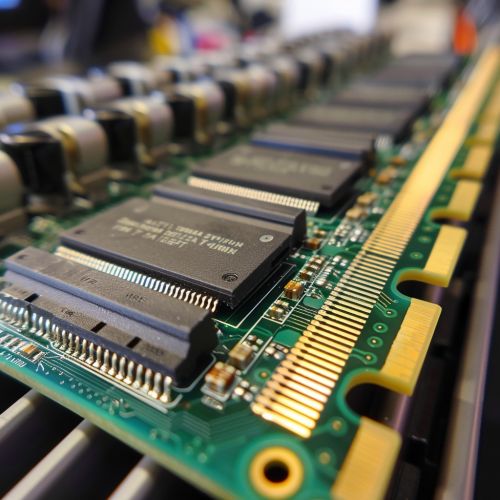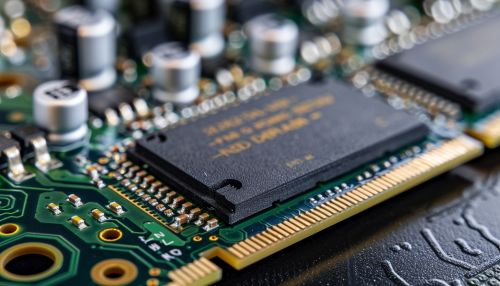Computer hardware
Introduction
Computer hardware refers to the physical parts of a computer system, including the central processing unit (CPU), memory, storage devices, and peripherals. Unlike software, which consists of the programs and data that the computer processes, hardware is tangible and can be directly manipulated.
Central Processing Unit
The CPU, often referred to as the "brain" of the computer, is the primary component of a computer that performs most of the processing. It interprets and carries out the instructions contained in the software, performing input/output operations, basic arithmetic, and controlling and coordinating other hardware components.
Memory
Computer memory is a storage space in the computer where data is to be processed and instructions required for processing are stored. The memory is divided into large number of small parts called cells. Each location or cell has a unique address, which varies from zero to memory size minus one.


Storage Devices
Storage devices are the computer hardware that records and/or retrieves items to and from storage media. Reading is the process of transferring items from a storage medium into the memory. Writing is the process of transferring items from memory to a storage medium.
Peripherals
Peripheral devices are devices that are not the core computer architecture, but are nonetheless connected to the computer. These can include input devices like a keyboard, mouse, or graphics tablet, and output devices like a monitor, printer, or speakers.
Hardware Interfaces
Hardware interfaces are the physical, tangible connections that allow the computer to communicate with other devices. These can include ports, like USB ports, HDMI ports, or Ethernet ports, as well as wireless connections like Bluetooth or Wi-Fi.
Conclusion
Understanding computer hardware is crucial for understanding how computers work. While the specific components can vary greatly depending on the specific system and its intended use, the fundamental concepts remain the same. By understanding these components and how they interact, one can better understand the operations of a computer system.
